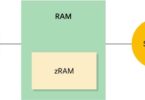Scientist – Changing Cells in Blind Eyes
Scientists could now be capable of changing the cells in blind people’s eyes and provide them with the power to see once again. When the rods and cones which make the photoreceptors of the eyes tend to fail because of injury or illness, people could lose their sight altogether.
Scientists are hopeful that they could use Gene Therapy in transforming nerves in the eye to compensate for those lost photoreceptors. Zhuo-Hua Pan of Wayne State University in Detroit has developed a technique called Gene Therapy, which is part of a new field known as optogenetics.
Optogenetics uses the molecules from algae or other microorganisms which tend to respond to light or creates molecule for the same, putting them into nerve cells for transformation in order that they can accept light.
Optogenetics is a kind of gene therapy which tends to work by changing the makeup of the impaired cells. Though it only converts instead of edits, the genes, it is not likely to cause the same type of ethical as well as practical problem which blot work on other kinds of gene therapy. New genes when placed into cells tend to produce working copies of proteins to help in getting back to work again.
Optogenetics – Very Promising/Creative Approach
Similar technique has also been used in helping children with fault immune systems and has already restored the sight of people with specific form of blindness.
Around 200,000 people in the US had inherited diseases which created problems for the photoreceptors in their eyes and when the cones and rods are gone, there is generally no way of re-establishing them. Optogenetics seems to be very promising and a creative approach in restoring vision in people with severe vision loss or total blindness.
The foundation’s chief research officer, Stephen Rose, M.D; stated in a news release that `RetroSense has outstanding technology and has achieved impressive results in lab studies and that they are pleased to support the company in its effort to move the treatment into a clinical trial’. He said that an advantage of optogenetic treatments is because they work independent of genetic defects causing disease, working for various retinal degenerations.
Rewire Cells To Become Light Sensitive
Dr Pan’s strategy is focused on genetically converting light-insensitive inner retinal neurons into photosensitive cells enabling restoring light sensitivity to retinas lacking photoreceptors. With the use of a virus which tends to deliver a photoreceptor gene from green algae called channelrhodopsin-2 (ChR2), he found that it made the inner retinal neurons light sensitive and continued for long time in the neurons eventually leading to restored responses to light in the brain’s visual cortex.
The new field besides helping blind people also gives an understanding on how the brain functions and can even be used in altering memories. Now the scientists are expecting that they could utilise this technique in restoring the sight of the blind people, a technique which has already been successful on animals and research on humans could probably begin next year.
The new approach relies on problematic photoreceptors and rather than focussing on the ganglion cells behind them, they generally work taking the information between the rods and cells as well as the brain. Scientist are hoping that they could rewire these cells in order that they become sensitive to light by introducing the right molecules and shining light at them. Light rouses the right proteins, enabling message to tide in and bring about the same behaviour in cells around them.






